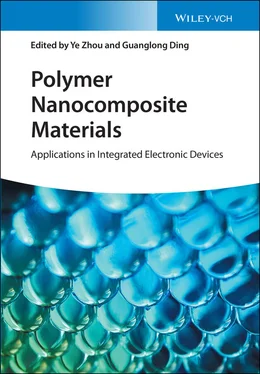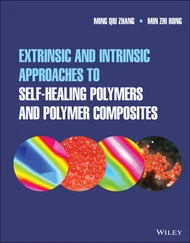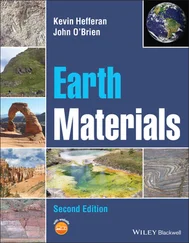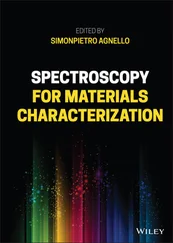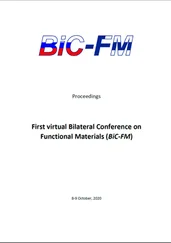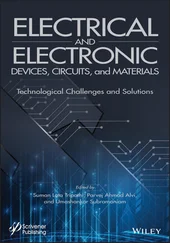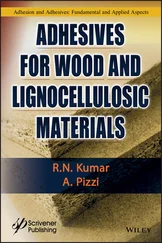Solution mixing refers to a process for preparation of CPCs through mixing conductive elements and polymer matrix in a solvent, followed by cooling and solvent removal. Generally, this fabrication process contains three key steps: (i) preparation of filler suspension in a suitable solvent, (ii) mixing filler suspension with polymer, and (iii) precipitation or solvent evaporation of the mixed solution. While the majority of conductive fillers, especially carbon-based fillers (e.g. CNTs, graphene, and carbon black) show undesired dispersion in organic solvent due to their large specific surface area and high degree of graphitization thus low surface energy. Herein, it is difficult to get a uniformly dispersed suspension of carbon-based fillers just by mechanical stirring. Thus, powerful ultrasonication is often adopted to assist the nanofiller dispersion in a polymer solution [50–52]. In many cases, chemical modification or the dispersant is required. For instance, acid (such as sulfuric and/or nitric) is often used to modify the CNTs, and the graphitized structure of the CNTs is partially damaged and oxygen containing functional groups can be grafted onto the filler surface through covalent bonding [53, 54]. These functional groups can effectively promote the nanofiller dispersion in the solution due to the interaction (e.g. hydrogen bond) between fillers and solvent [16, 55].
Although covalent bonding is permanent and mechanically stable, chemical reaction can also, to a large degree, damage the sp 2conformation of the carbon atom, thereby disrupting the conjugation of the CNT wall. As a result, thermal, electrical, and mechanical properties of the chemically modified CNTs decreased dramatically, as compared with the pristine nanotubes [56]. To preserve the integrity of CNT microstructure while at the same time improve CNT dispersity, the noncovalent method to functionalize CNTs has received increasing attention, because the surface structure of the nanofillers is preserved and thus the physical and electrical properties of the nanofillers are preserved [19, 57]. Generally, the surfactants with perfect solubility with the solvent are usually used in noncovalent method, and these molecules are able to wrap CNTs, and the affinity between CNTs and the solvent is thus enhanced [58].
In recent years, amphiphilic molecules like polymers are non-covalently attached on the surface of nanofillers to overcome their aggregation [59, 60]. For example, poly(vinylpyrrolidone) (PVP) and polystyrene sulfonate (PSS) were used to improve the solubility of CNT in water and thus the CNT dispersion in polymer matrix [e.g. polyvinyl alcohol (PVA) and polyethylene oxide (PEO)] [61, 62]. Lee et al. [63] successfully dispersed MWCNTs with the concentration as high as 6.7 wt% in a PEO solution by attaching the amphiphilic poly(styrenesulfonic acid- graft- aniline) (PSS- g -ANI) to the surface of MWCNTs. The attachment of PSS- g -ANI has dramatically enhanced the dispersion of MWCNTs and dispersion of 1%, 10%, 20%, 30%, and 40% MWCNT/PEO solutions still remains homogeneous even after three days. Deoxyribonucleic acid (DNA) as a representative biopolymer has now also been considered as a powerful dispersing agent to disentangle strongly bundled CNTs in an aqueous solution, resulting from DNA's strong ability to wrap around the sidewalls of CNTs [64, 65]. It was reported that CNTs were individually dispersed in the DNA solution, and the uniform dispersion could be preserved in the polymer/CNTs/solvent ternary solution [65]. In PEO nanofiber composite, under the DNA assistant dispersion, double-walled carbon nanotubes (DCNTs) were finally trapped along the axis of the PEO nanofiber and acted as mechanically reinforcing filler and an electrical conductor [57]. The morphology of PEO nanofiber web consisting of long, homogeneous nanofibers with a diameter of <100 nm was obtained even with the content of 5% DNA-dispersed double-walled carbon nanotubes (DWNTs) shown in Figure 2.2a,b. Also, the modulus and tensile strength were largely improved by adding individually DNA dispersed DWNTs ( Figure 2.2c).

Figure 2.2 (a, b) The PEO/DNA nanofiber webs containing 5% DNA-dispersed DWNTs. (c) Stress–strain curves for nanofiber webs of pure PEO, PEO/DNA, and PEO/DNA/DWNT. Source: (a)–(c) Reproduced with permission. [57] Copyright 2013, American Chemical Society.
2.2.3 In Situ Polymerization
In situ polymerization was firstly proposed by Imai et al. where polyimide (PI)/CB composite was obtained by dispersing the CB into the polymer salt monomer [66]. In fact, this is a unique solution based processing technology for preparing the CPCs, and chemical reaction is usually involved during the polymerization [67, 68]. The efficient polymer-chain graft onto the filler surface could form a perfect interface interaction between the filler and polymer matrices, which also improves the homogeneous dispersion of the fillers in the polymer matrix and influences the crystallization of polymer chains to some extent [69–71]. As a result, CPCs with a high weight content of the nanofillers can be obtained by this method [69, 72].
Zhu and coworkers prepared reduced graphene oxide (r-GO)/PI composites with different loadings of GO by in situ polymerization and the maximum content of GO can reach 30 wt%. During polymerization, a relatively high temperature was set to reduce GO into conductive r-GO in the polymer matrix. The electrical property of the obtained r-GO/PI was greatly enhanced, because of the conductive network formed by r-GO in the composite film and the conductivity could reach as high as 1.1 × 10 1S m −1, which is about 10 14times that of pure PI film [73]. The mechanical properties of GO/PMMA composites fabricated by in situ polymerization were also tested by Potts et al. [74]. It is found that the elastic modulus and tensile strength of the GO/PMMA composites could be improved even with 1 wt% loading of fillers.
Different fabrication techniques may lead to different morphologies of conductive networks in CPCs, which significantly influence the electrical properties of these composites [30]. Various morphologies including uniform dispersion of nanofiller in the polymer matrix, segregated structure, and selective decoration of the nanofiller on the skeleton of porous polymer materials are reported [75].
2.3.1 Random Dispersion of Nanofiller in the Polymer Matrix
The most straightforward and popular strategy to fabricate CPCs is the incorporation of conductive fillers (e.g. graphene, CNTs) in the polymer matrix by either melting or solution method. Naturally, the nanofillers are randomly located in the polymer matrix, and some of them may be squeezed out to polymer surface in particular at a high filler concentration [76]. The nanofillers can be uniformly distributed in the fibers, film, and three-dimensional polymer materials, depending on the processing technology used. Wet-spinning [77, 78] and electrospinning [75, 79] are two most common means to prepare one dimensional CPCs. Yu et al. [80] have successfully prepared conductive poly(styrenebutadiene-styrene) (SBS)/CNT fiber through wet-spinning the mixed solution of CNT and SBS elastomer. The schematic diagram of the fabrication procedure of SBS/CNT and the pictures of flexible SBS composite with different content of CNTs are shown in Figure 2.3a. Figure 2.3b–d show the SEM micrographs of fracture SBS/CNT fibers with a content of 0.5%, 0.75%, and 1%, respectively. Uniformly dispersed CNTs in SBS matrix can be observed even at a CNT content of 1%. Also, the conductivity of the obtained 1-D conductive fiber composite improves with the increase of CNT content ( Figure 2.3e).
Читать дальше
